Newfoundland's smallest green hydrogen project becomes 1st to ink agreement with a buyer
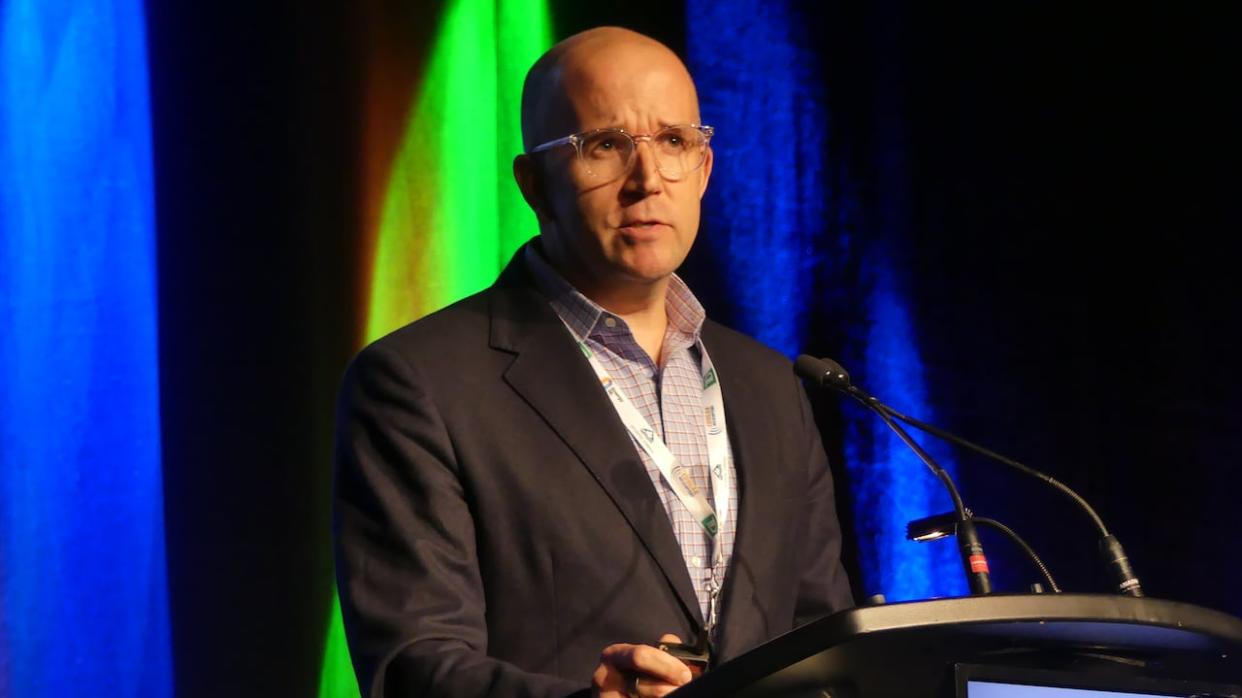
Pattern Energy is the first Canadian green hydrogen company to break into the European market, announcing on Wednesday that it signed a letter of intent with a German company to purchase all of the product coming from Pattern's proposed Argentia site.
The deal was signed quietly in March, but wasn't made public by Pattern until Wednesday at the Energy N.L. annual conference and exhibition.
The deal with German energy firm Mabanaft slingshots Pattern Energy ahead of other companies in the race to produce green hydrogen and ammonia for foreign markets.
"This is an opportunity a lot of developers are chasing. At that point there haven't been any firm and binding offtake deals for green ammonia of significance that have been announced, so this would be among the first and I think blazing the trail for a new industry," said Pattern Energy assistant vice-president Frank Davis.
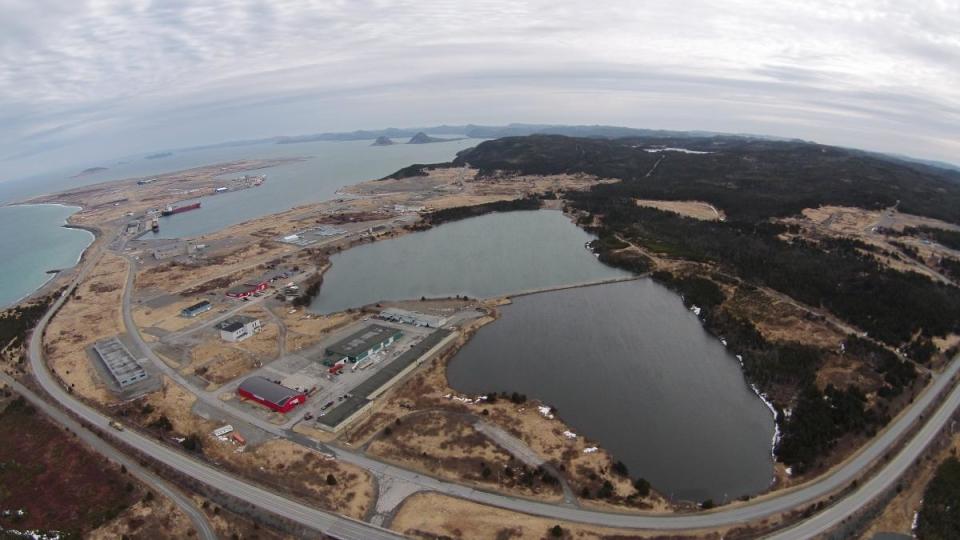
Pattern Energy is looking to develop 4,000 acres of land owned by the Port of Argentia to erect wind turbines for the production of ammonia. (Port of Argentia)
It's a letter of intent for now, as Mabanaft does its due diligence and Pattern refines the financial model of the project, which is expected to cost about $1.5 billion.
At 300 megawatts of wind power, the Pattern project is the smallest of the five proposals in Newfoundland. By comparison, the World Energy GH2 project on the Port au Port Peninsula is about 13 times larger than Pattern's plans.
Pattern is also the only company proposing to build its project on private land, contained within the Port of Argentia.
Davis said the scale of the project is a key reason why they've been the first company to ink a deal with a purchaser.
"We believe that we've sized the project appropriately for what the market can accommodate this decade for green ammonia," he said.
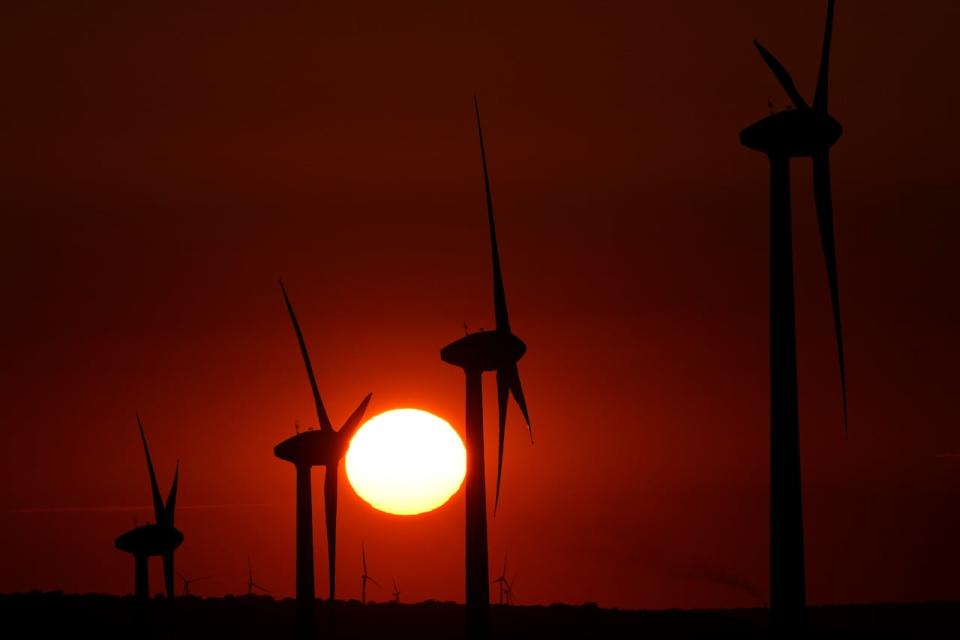
Wind turbines could soon dot the horizons of Newfoundland, as several green hydrogen projects move toward final investment decisions. (Matthias Schrader/The Associated Press)
All the proposed projects would see wind energy power machines called electrolysers that turn water into hydrogen. Since hydrogen is relatively unstable, it will be converted to ammonia to be shipped to foreign markets.
While other companies have talked about the potential for that ammonia to be turned back into hydrogen and used as the clean fuel of the future, Pattern has always been content with selling ammonia for the sake of ammonia.
"Creating ammonia is a well-established process globally. They've been doing it for a hundred years," Davis said. "And a company like Mabanaft, they actually view ammonia as a transition fuel itself, so not just viewing it as a carrier of hydrogen that you need to pull the hydrogen out of."
Pattern Energy also announced it has submitted its environmental impact statement with the provincial government, and is hoping to clear the process by the end of the year.
So far, only World Energy GH2 has cleared the environmental process, albeit with a list of about 60 conditions to follow.
Purchase agreements hard to come by
The green hydrogen rush is cooling around the world, with analyst Rystad Energy estimating the total projects announced for 2024 will only be about 30 per cent of the capacity announced in 2023.
"Rystad Energy expects fewer project announcements going forward as most developers will be focusing on bringing their existing projects to fruition," reads the company's latest report from April 29.
With companies now focused on making plans a reality, the push is on to sign agreements with companies who will actually buy the end product.
That process has not gone as well as producers or consumers would have hoped. Research firm Bloomberg NEF estimates only 12 per cent of the capacity due to come online by 2030 has a purchase agreement attached to it so far.
That creates problems for companies in their search for funding.
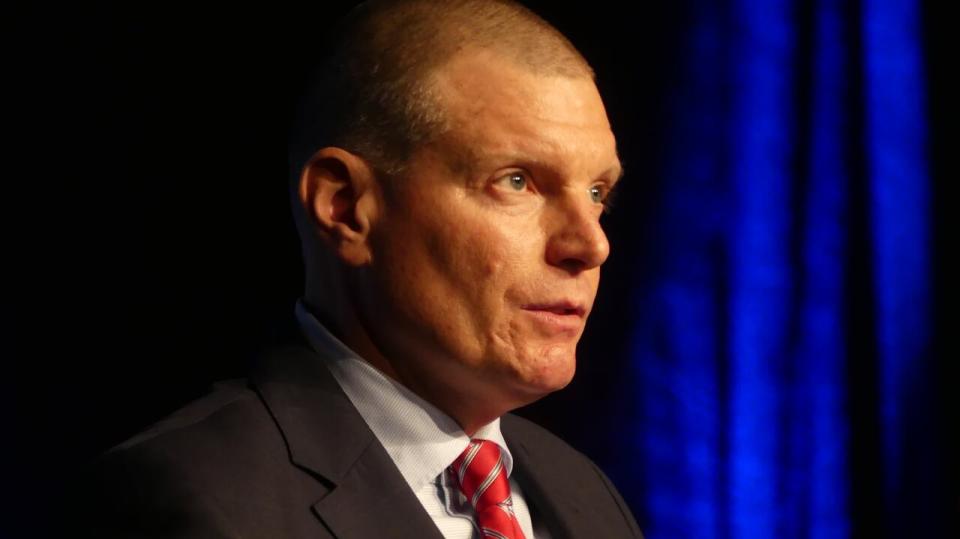
World Energy GH2 CEO Sean Leet gave an update on Project Nujio' Qonik, his company's planned wind-to-hydrogen project on the province's west coast, on Tuesday. (Ryan Cooke/CBC)
Sean Leet, CEO of World Energy GH2, said his company is looking for purchasers who are willing to sign contracts of at least 10 years in duration.
"There's concern around the tenure of those contracts and we need that tenure at a minimum to stand up the industry," Leet said. "Ten years is the signal we need from the offtake community for the lending community to step in and say 'OK, we've got an offtaker here that has a strong enough balance sheet to support this and they want that product.'"
Davis agreed, saying lenders are hesitant to finance a project over 25 years without a strong commitment from buyers.
"We would view 10 years as certainly almost a minimum," Davis said on Wednesday.
So what's the hold up? The industry is going to be heavily subsidized in its infancy, and those potential buyers are hesitant to sign deals until they know what they're going to get from the Canadian government in return.
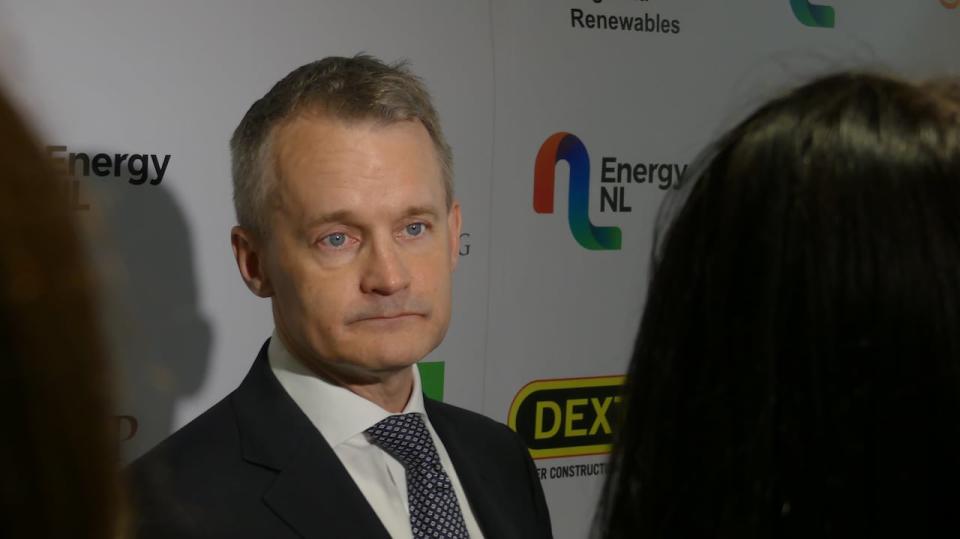
Federal Labour Minister Seamus O'Regan chairs the Ministerial Working Group on Regulatory Efficiency for Clean Growth Projects — a mouthful, he admits — which is working through tax credits for the green hydrogen industry. (Ryan Cooke/CBC)
Ottawa has announced green hydrogen investment tax credits of at least 40 per cent if certain conditions are met, but the specifics have yet to be announced.
"We need that pricing support to bridge the difference between the current fossil fuel prices and the premium required to create green fuels, at least for a period of time until the market stands itself up," Leet said.
Federal Labour Minister Seamus O'Regan, who heads a task force involving green hydrogen, said to "watch that space in the next few weeks and months."
O'Regan said they have to be competitive with the U.S. government, which is investing heavily in green hydrogen.
"Huge urgency," O'Regan said. "We've got to get going."
Download our free CBC News app to sign up for push alerts for CBC Newfoundland and Labrador. Click here to visit our landing page.

 Yahoo News
Yahoo News 
